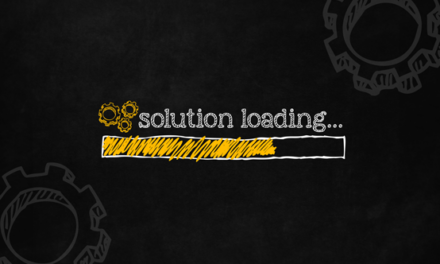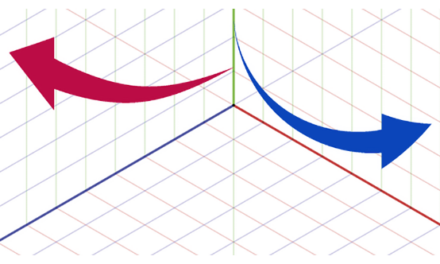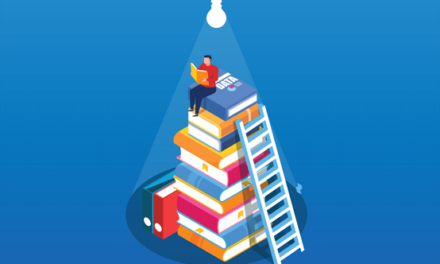Black students can achieve at higher levels when schools teach them how to see, name, and challenge racial oppression.
Research has suggested that critical consciousness — the ability to recognize and analyze systems of inequality and the commitment to take action against these systems — can be a gateway to academic motivation and achievement for marginalized students. That was certainly the case for Terrence, a junior at One Vision High School and a participant in a school project to develop a podcast titled “Our City Today.” Here’s what Terrence said about his participation in this project:
I wanted opportunities to speak openly with my peers about the things that we see every day. Crime rates, drug rates, riots. I had the chance to put the past in conversation with the future. I watched a documentary that showed how police brutality and issues like that have been going on for a long time . . . [and that black] children back in the day didn’t have the opportunity to come to a school like One Vision. I consider that a challenge. Sometimes I want to leave One Vision. Sometimes I want to leave so bad. But I know deep down in my heart why I’m here, so I buckle down and do my homework . . . I see the bigger picture.
A heightened critical consciousness helped Terrence commit to his schooling. Yet despite the benefits that critical consciousness development offers to students, little research has investigated how schools can develop black students’ critical consciousness of racial oppression.
To help fill this gap, we studied five urban schools in the northeast that serve predominantly black student bodies and include critical consciousness development in their mission. (The names for all of the schools are pseudonyms.) Our longitudinal, mixed-methods study focused on the role schools can play in preparing youth of color to analyze, navigate, and challenge oppressive conditions in our society. Terrence was one of 50 black high school students in the class of 2017 whom we interviewed over the past three years.
A key theme emerging from these interviews is that black teenagers are attuned to the vast array of unjust structural forces operating in their communities, in society, and in their schools. Schools seeking to increase black students’ academic achievement must directly address these relevant social forces. Otherwise, they’re missing what Terrence calls “the bigger picture.”
The case for critical consciousness
Brazilian educator Paulo Freire (1970) conceived of critical consciousness while working with adult laborers in Brazil. Freire realized that inequality is sustained when the people most affected by it are unable to decode their social conditions. Freire proposed a cycle of critical consciousness development that involved gaining knowledge about the systems and structures that create and sustain inequity (critical analysis), developing a sense of power or capability (sense of agency), and ultimately committing to take action against oppressive conditions (critical action).
Contemporary research has found that critical consciousness not only expands young people’s commitment to challenging pervasive injustice (Ginwright, 2010; Watts, Diemer, & Voight, 2011) but also increases academic achievement and engagement (Carter, 2008; O’Connor, 1997). In particular, school-based programming designed to foster critical consciousness has been shown to increase academic engagement and achievement (Cabrera et al., 2014; Cammarota, 2007; Dee & Penner, 2016) and enrollment in higher education (Rogers & Terriquez, 2013). In explaining these relationships, researchers have suggested that critical consciousness of oppressive social forces can replace feelings of isolation and self-blame for one’s challenges with a sense of engagement in a broader collective struggle for social justice (Diemer et al., 2014; Ginwright, 2010). Research also suggests that a critical consciousness about racism, specifically, can motivate black students to resist oppressive forces through persisting in school and achieving in academics (Carter, 2008). This motivation is often fueled by a desire to prove wrong the stereotypes embedded in racist structures and institutions (Carter, 2008; Sanders, 1997). Terrence’s reflection about the persistent institutional racism he saw in his community as a challenge to stay the course in school is an example of such “achievement as resistance.”
Promising practices
Three strategies emerged from our study as promising practices schools can use to develop black students’ critical consciousness and harness the connection between critical consciousness and student achievement.
#1. Teach the language of inequality.
A key component of critical consciousness is the ability to recognize inequality and injustice (Watts, Griffith, & Abdul-Adil, 1999). For black students to successfully work against the conditions that create barriers to their learning, they need to notice when these barriers are at play and be able to communicate and explain what they notice. For example, Terrence’s participation in the “Our City Today” project gave him time and space to “see” his community and understand its challenges at a deeper level, and it also gave him access to language to explain what he noticed. Educators can support such development in their students by introducing a framework for analyzing inequity.
Make the Road Academy (MtRA), another high school in our study, introduced students to a framework for recognizing forms of racism in society. Students learned that racism can be transmitted in three ways: through interpersonal racism, racism that occurs between individuals, institutional racism, racism that is expressed by and through social and political institutions, and internalized racism, racist beliefs that marginalized groups hold against themselves. Teachers taught this framework, called The Three I’s, over several lessons. In one lesson our research team observed, students practiced their comprehension of each of the forms of racism by reviewing examples of racism from their community:
Teacher: How about when TV personality Judge Joe Brown tells black children they will be criminals in the courtroom?
Student 1: I called it interpersonal because he’s telling kids a stereotype.
Teacher: Exactly. Or when liquor stores are strategically placed on every corner in urban neighborhoods?
Student 2: I put institutional. They’re placing liquor stores in urban neighborhoods so a lot of people will smoke and drink.
Teacher: What about blacks believing their hair isn’t beautiful, so they buy “better” hair from other races?
Student 3: Institutional?
Student 4: Internalized oppression because society says that black people have coarse or knotty hair, and [some black women] believe it.
Teacher: [to clarify] When any race or group of people starts believing the stereotypes about them, this is internalized oppression.
Later, students were asked to diagram an urban neighborhood where racism was present and label each example with the appropriate “I” in the framework. Students drew a range of images:
- A business advertising for a job indicating, “No blacks” (institutional racism);
- A black student on a basketball court saying, “This is all I can do” (internalized racism); and
- A police officer racially profiling a black motorist (interpersonal racism).
Offering students language to distinguish among different types of racism gave them a tool that helped them read the world. One MtRA student, Mason, explained:
In school, they’re really teaching us how to be able to recognize it [racism] more. If you were to ask me a couple years back if I knew what internalized oppression was, I wouldn’t be able to tell you ’cause I didn’t know. But I know what it is now.
This clarity and language offer profound benefits. Oppression is easiest to sustain when the disenfranchised ignore it, miss it, or support it rather than resist it (Watts et al., 1999). Critical consciousness and the associated language of inequality make racial injustice visible. In schools, this visibility creates an opening for educators to discuss the role that social forces play in students’ lives and in students’ learning opportunities and outcomes.
#2. Create space to interrogate racism.
In addition to being able to recognize inequity and describe it, students need to understand the depths of inequality and the myriad forces that sustain it. Terrence described his new understanding of the long history of police brutality in the lives of black people as powerful learning. It provided him with the motivation to persist and excel academically. Recognizing that such consciousness about inequality could both deepen their students’ academic motivation and ability to resist racial injustice, each school in our study used different practices to create spaces within students’ everyday schoolwork to facilitate learning about race inequality.
At Leadership High School, for example, 11th- and 12th-grade students participated in a semester-long English seminar focused on the black experience (another was offered on the Latino experience). The seminars created a space within school for students to learn about issues of race and racial identity and better understand how racial inequity works systemically and in their own lives. In the Black Experience seminar, students read Ta-Nehisi Coates’s Between the World and Me (2015), a book that analyzes how black bodies are treated in the United States. After reading the book, the students discussed the underlying mindsets and systemic forces that contributed to the disregard for black bodies during slavery and continue to contribute to the persistent disregard for these bodies today. For most students in the class, who are navigating society in black skin, this conversation contributes to their understanding of their personal experiences with racial inequity.
Schools in our study also make time to discuss racial inequity that students see on the news, in social media, and in their communities. Following a series of protests in the community as part of the Black Lives Matter movement, the principal asked her faculty to allot time during morning advisory for students to discuss and reflect on the following three questions:
- What systemic issues are in place in Baltimore that could have led to the riots?
- What do you think Baltimore’s response should be to the riots? What should the governor’s response be? What should the federal response be?
- What action steps do you think we must take as a society to address police brutality in the United States?
In this and other instances, the conversations were not a part of the intended schedule, yet educators recognized the importance of these events in students’ lives and took advantage of the opportunity to develop students’ critical consciousness. To truly integrate critical consciousness development into the work of school, schools need to be prepared to fold in these conversations spontaneously when the need arises.
#3. Teach students how to take action.
When people understand the social, economic, and political forces threatening their communities, they’re more likely to engage in activities that challenge those forces (Ginwright, 2010). In a third school in our study, Community Academy, the humanities curriculum introduced students to historical and contemporary methods for resistance.
In a 9th-grade lesson on apartheid in South Africa, for example, students discussed the differences between civil disobedience and militant resistance and debated their respective effectiveness in social change efforts:
Teacher: OK, the setting is 1961. The Sharpeville massacre just happened. You’re a member of the African National Congress, and you have to decide what to do.
Student 1: I said we should do militant resistance because [the protesters] tried to be peaceful, and it didn’t work.
Student 2: My opinion is militant resistance. [The protesters] really touched the government on some basics like shutting off their power plant or attacking government buildings and power stations. But they were avoiding killing people. I feel like that’s important because it was like sending the government a warning and getting their point across by hurting what the government really needed.
Student 3: I disagree because they’re not going to listen to you if you’re not peaceful.
Student 2: Well, I’m not saying violence is the key, but, in this case, it really was. You have to fight fire with fire on this one. [The police] was treating [the protesters] all unfair. And when they marched peacefully, [the police] was like, “We don’t care.” They spit in their face.
Student 4: I disagree because either way everyone dies, and that doesn’t solve anything.
In this lesson, students were learning how resistance happens, as well as the possible implications of different types of resistance. Such lessons position students to act against inequity in thoughtful and strategic ways. For example, as a part of the Black Lives Matter movement, numerous students at Community Academy participated in a citywide walkout and protest. One student, Missy, clearly linked this experience to her learning about different types of social action in humanities class. As she explained:
First I was like, I don’t know what me marching out here is gonna do ’cause they can’t personally hear what I want to say. But like we learned in humanities, civil disobedience will actually get us to where we want to be if we do it without violence and with words.
Through such instruction, Community Academy shows students how to resist in ways that overcome racism as a barrier to success and that have positive long-term outcomes for both individuals and communities. Scholars suggest that understanding adaptive strategies of resistance leads students to identify academic achievement as part of a collective struggle (Carter, 2008).
Empowered to achieve
A robust body of scholarship makes clear that disparities in academic learning outcomes between black students and peers from other racial groups are directly linked to a wide array of structural injustices in the United States against the black community. These include biased housing policies, gaps in economic opportunities, the over-incarceration of black men and women, rampant police brutality, and the unequal allocation of resources to schools (Carter & Welner, 2013). As educators, we cannot claim to be concerned with closing academic gaps without taking seriously the question of how to give black students the language and skills they need to understand the social conditions working against them.
Nor can we ignore the profound social change and academic benefits of nurturing students’ critical consciousness. Through providing a framework and a language for analysis, making space to talk about inequity, and teaching students how to take action, schools can integrate students’ sociopolitical realities into their ongoing work and contribute to critical consciousness development.
At the end of his interview, Terrence shared something he claimed he had never told anyone before. “This project changed me,” he said. His reaction isn’t just the isolated narrative of one black student. It’s reflective of the transformative possibilities of committing to critical consciousness development in schools.
References
Cabrera, N., Milem, J., Jaquette, O., & Marx, R. (2014). Missing the (student achievement) forest for all the (political) trees: Empiricism and the Mexican-American studies controversy in Tucson. American Educational Research Journal, 51 (6), 1084-1118.
Cammarota, J. (2007). A social justice approach to achievement: Guiding Latina/o students toward educational attainment with a challenging, socially relevant curriculum. Equity & Excellence in Education, 40 (1), 87-96.
Carter, D.J. (2008). Cultivating a critical race consciousness for African-American school success. Educational Foundations, 22 (1-2), 11-28.
Carter, P.L. & Welner, K. (2013). Closing the opportunity gap: What America must do to give every child an even chance. New York, NY: Oxford University Press.
Coates, T. (2015). Between the world and me. New York, NY: Penguin Random House.
Dee, T. & Penner, E. (2016). The causal effects of cultural relevance: Evidence from an ethnic studies curriculum. CEPA Working Paper No. 16-01. https://cepa.stanford.edu/sites/default/files/wp16-01-v201601.pdf
Diemer, M., Rapa, L., Park, C., & Perry, J. (2014). Development and validation of a critical consciousness scale. Youth & Society, 1-23.
Freire, P. (1970). Pedagogy of the oppressed. New York, NY: Herder & Herder.
Ginwright, S. (2010). Black youth rising: Activism and racial healing in urban America. New York, NY: Teachers College Press.
O’Connor, C. (1997). Dispositions toward collective struggle and educational resilience in the inner city: A case analysis of six African-American high school students. American Educational Research Journal, 34 (4), 593-629.
Rogers, J. & Terriquez, V. (2013). Learning to lead: The impact of youth organizing on the educational and civic trajectories of low-income youth. Los Angeles, CA: Institute for Democracy, Education, and Access.
Sanders, M.G. (1997). Overcoming obstacles: Academic achievement as a response to racism and discrimination. Journal of Negro Education, 66 (1), 83-93.
Watts, R., Diemer, M., & Voight, A. (2011). Critical consciousness: Current status and future directions. New Directions for Child and Adolescent Development, 134, 43-57.
Watts, R., Griffith, D., & Abdul-Adil, J. (1999). Sociopolitical development as an antidote for oppression: Theory and action. American Journal of Community Psychology, 27, 255-272.
Originally published in February 2017 Phi Delta Kappan 98 (5), 18-23. © 2017 Phi Delta Kappa International. All rights reserved.
ABOUT THE AUTHORS

Aaliyah El-Amin
AALIYAH EL-AMIN is a lecturer on education at the Harvard Graduate School of Education, Cambridge, Mass.

Daren Graves
DAREN GRAVES is an associate professor at the Simmons School of Social Work, Simmons College, Boston, Mass.

Jamie Johannsen
JAMIE JOHANNSEN is an undergraduate research assistant at Boston University, Boston, Mass.

Jalene Tamerat
JALENE TAMERAT is a doctoral student at Boston University, Boston, Mass.

Madora Soutter
Madora Soutter is an assistant professor in the Department of Education and Counseling at Villanova University, Villanova, PA.

Shelby Clark
Shelby Clark is senior research manager of Project Zero at the Harvard Graduate School of Education, Cambridge, MA.

Saira Malhotra
SAIRA MALHOTRA is an undergraduate research assistant at Boston University, Boston, Mass.

Scott Seider
SCOTT SEIDER is an assistant professor of education at Boston University, Boston, Mass., and author of Character Compass: How Powerful School Culture Can Point Students Toward Success .










